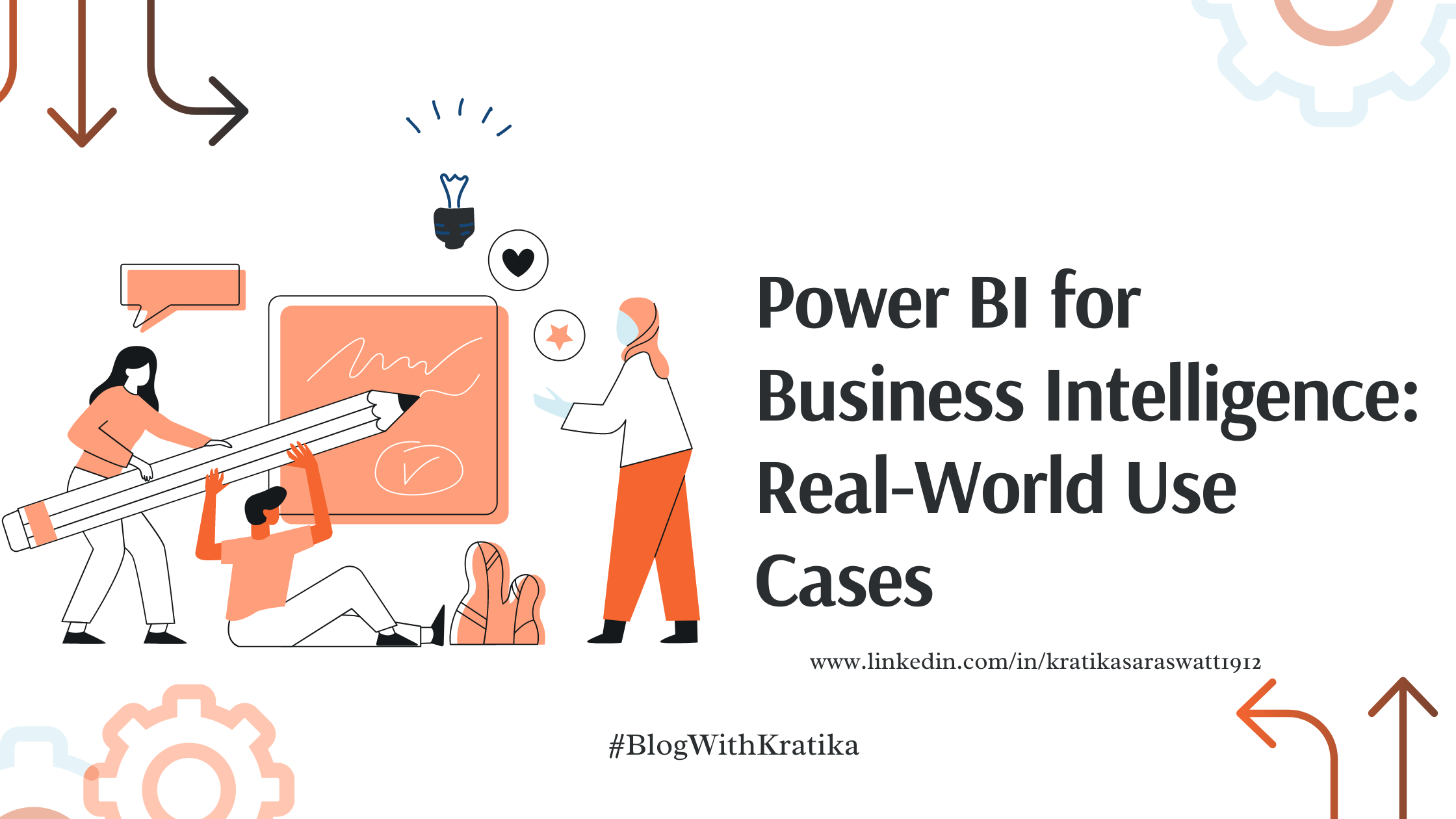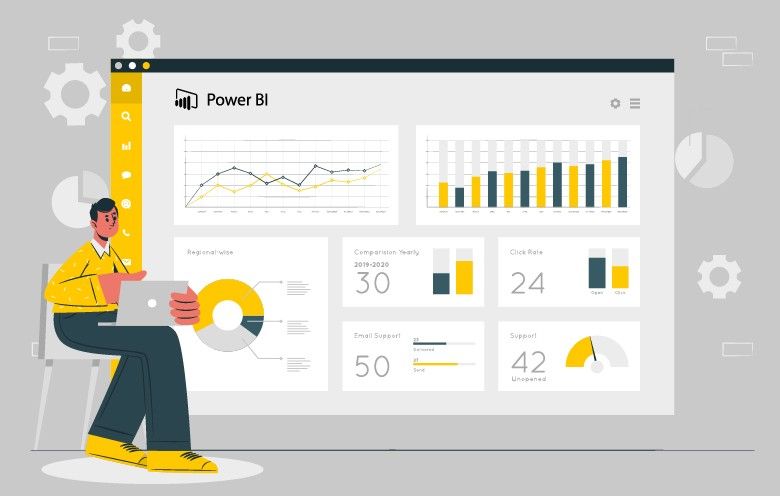Power BI for Business Intelligence: Real-World Use Cases
 Kratika Saraswat
Kratika Saraswat
In the era of data-driven decision-making, organizations rely on Business Intelligence (BI) tools to transform raw data into actionable insights. Microsoft Power BI is a leading BI tool that empowers users to visualize data, discover patterns, and share insights across their organization. In this blog, we’ll explore real-world use cases of Power BI that demonstrate its versatility and power in various industries.

1. Sales and Marketing Analytics
Use Case: A global retail company wants to improve its sales performance by understanding customer behavior and sales trends.
Solution with Power BI:
Sales Performance Dashboard: By integrating data from various sources such as CRM systems, sales databases, and social media platforms, the company can create a comprehensive sales performance dashboard. This dashboard visualizes key metrics such as sales revenue, conversion rates, and customer acquisition costs.
Customer Segmentation: Using Power BI's advanced analytics, the company can segment customers based on demographics, purchase history, and behavior. This helps in targeting marketing campaigns more effectively.
Trend Analysis: Power BI’s time series analysis tools allow the company to identify sales trends and seasonal patterns, enabling better inventory management and marketing strategies.
2. Financial Reporting and Analysis
Use Case: A financial services firm needs to streamline its financial reporting process and gain deeper insights into its financial health.
Solution with Power BI:
Automated Financial Reports: By connecting Power BI to the firm’s financial databases, automated financial reports can be generated. These reports provide real-time insights into key financial metrics such as revenue, expenses, and profitability.
Budget vs. Actuals Analysis: Power BI allows for the creation of detailed budget vs. actuals reports, helping the firm track financial performance against its targets.
Predictive Analytics: Utilizing Power BI’s integration with Azure Machine Learning, the firm can develop predictive models to forecast future financial performance and identify potential risks.
3. Supply Chain and Inventory Management
Use Case: A manufacturing company wants to optimize its supply chain operations and reduce inventory costs.
Solution with Power BI:
Supply Chain Dashboard: By aggregating data from ERP systems, suppliers, and logistics providers, the company can build a comprehensive supply chain dashboard. This dashboard tracks metrics such as inventory levels, lead times, and supplier performance.
Inventory Optimization: Power BI’s advanced analytics capabilities help in identifying slow-moving inventory and predicting stockouts. This allows the company to optimize inventory levels and reduce carrying costs.
Supplier Performance Analysis: Power BI enables the company to analyze supplier performance based on delivery times, quality, and cost. This information can be used to negotiate better terms and improve supplier relationships.
4. Healthcare Analytics
Use Case: A hospital wants to enhance patient care and operational efficiency by leveraging data analytics.
Solution with Power BI:
Patient Care Dashboard: By integrating data from electronic health records (EHR), patient satisfaction surveys, and hospital management systems, the hospital can create a patient care dashboard. This dashboard tracks patient outcomes, readmission rates, and patient satisfaction scores.
Operational Efficiency: Power BI helps in analyzing hospital operations by monitoring metrics such as bed occupancy rates, average length of stay, and resource utilization. This information can be used to streamline operations and reduce costs.
Clinical Decision Support: Using Power BI’s integration with advanced analytics and machine learning, the hospital can develop clinical decision support systems that assist healthcare providers in diagnosing diseases and recommending treatment plans.
5. Human Resources and Workforce Analytics
Use Case: A large corporation wants to improve its workforce management and employee engagement.
Solution with Power BI:
HR Dashboard: By consolidating data from HR systems, employee surveys, and performance management tools, the corporation can create an HR dashboard. This dashboard provides insights into employee demographics, turnover rates, and performance metrics.
Employee Engagement Analysis: Power BI allows the corporation to analyze employee engagement survey results, identifying key drivers of engagement and areas for improvement.
Talent Management: Power BI’s predictive analytics capabilities can be used to identify high-potential employees and forecast workforce needs, helping the corporation plan for future talent requirements.
Conclusion
Power BI is a powerful tool that can transform how organizations leverage data for business intelligence. From sales and marketing analytics to healthcare and human resources, Power BI’s versatile capabilities enable users to gain deep insights and drive strategic decision-making. By implementing Power BI, organizations can unlock the full potential of their data, leading to improved performance and a competitive edge in their industry.
If you haven’t explored Power BI yet, now is the time to start harnessing the power of data to drive your business forward. The possibilities are endless, and the benefits are significant.
Subscribe to my newsletter
Read articles from Kratika Saraswat directly inside your inbox. Subscribe to the newsletter, and don't miss out.
Written by
